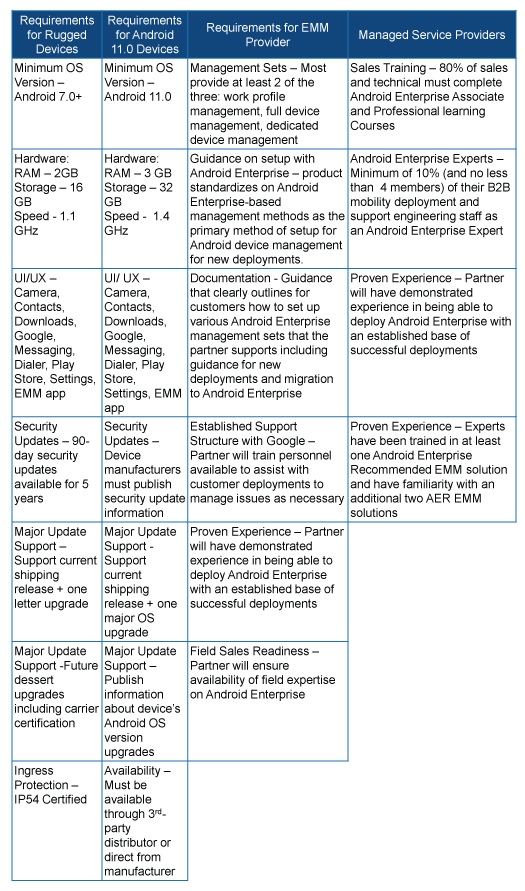Enterprise Mobility & the Connected Worker Blog
Samsung Joins Google’s Android Enterprise Recommended Program
by Chris Paggioli | 11/23/2020
Google launched the Android Enterprise Recommended (AER) program in 2018 to help enterprise mobility decision makers select, deploy and manage Android devices with more confidence. The AER program makes it easier for businesses to scale and support their mobile fleets while attempting to curtail platform fragmentation. This is accomplished through standardized features that let enterprises manage devices seamlessly and consistently, regardless of the scale. Implementing devices in the AER program means businesses will receive timely security patches and clear information about major updates. For mobile technology decision makers, the AER program provides knowledge for mobile devices adept at fitting enterprise business needs and ways of finding these devices, alongside resources to find enterprise mobility management (EMM) solutions, or ways to find managed service providers (MSPs).
However, the absence of Samsung, the leading Android device OEM, from the AER program left a massive void. Samsung has been a key player in the mobile enterprise space for years, which is why their absence has been such a gap in AER. This has been addressed with the recent announcement of Samsung joining the program. At odds between Google and Samsung has been Samsung’s Knox program. As part of the agreement, Google and Samsung have “harmonized” Android Enterprise and Knox with Samsung customers able to select between Zero Touch and Knox for enrollment services.
Google is also making zero-touch out of the box enrollment available on all Android 9.0+ devices through a Google Play services update. This is a major development for Google’s enterprise efforts. With this update, all recent devices, including Samsung devices, will support zero-touch. Samsung devices will have the option to choose between Samsung Knox Mobile Enrollment or zero-touch depending on needs and preferences. Furthermore, Google is making it easier for enterprises to configure their devices by integrating zero-touch into their existing EMM solution. Organizations can now link their accounts to automatically configure and manage their zero-touch devices form within their EMM console, instead of having to utilize the zero-touch portal. Zero-touch will be rolling out now to resellers and will be supported by all zero-touch resellers by the end of 2020. EMM partners are currently adding the integrated zero-touch experience to their consoles, which is a new advanced feature available in all AER EMMs in 2021. Since launching Zero-Touch, Google has partnered with 300 global resellers with another 100 partners poised to add support shortly.

While the value of a program like AER to enterprise mobility decision makers is significant, its application remains a balancing act between enforcing requirements and standards and providing enterprises with the necessary flexibility to manage their Android mobile fleets. This has opened the door for OEMs like Samsung and Zebra to create their own extensions and device utilities to better manage and support their devices in the enterprise. Android will always be challenged by the diversity of its eco-system and the openness of its platform. Moreover, the mobile lifecycle requirements of enterprises are often at odds with faster-paced consumer cycles. However, many enterprises are averse to forced upgrades before they have been fully tested to ensure application performance consistency. Not to mention OEM’s concerns with ceding too much control to Google. That said, AER is an important program with significant potential. With Samsung’s recent announcement to join and the decisions around zero-touch support, the AER has made significant strides.
To learn more about the constantly evolving enterprise mobility space, IT management solutions, and enterprise mobility management, download the 2020 Enterprise Mobility Research Outline.